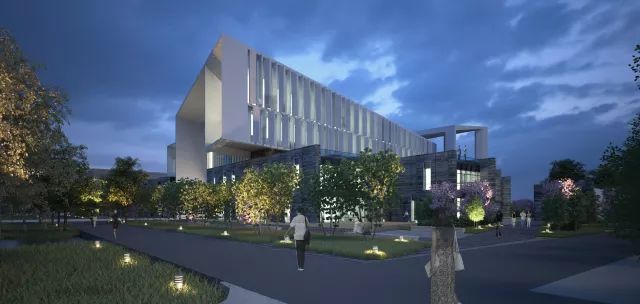Why the Michael Graves College?
Why now? And why at Kean?
A Public Position Paper on the Michael Graves College
The Michael Graves College at Kean University is a committed effort to transform architectural and design education by making it meaningful to a wider public.
Architecture and Design are inherently public and humanist arts. Yet the disciplines too often have situated themselves remotely from the public, particularly in education. This has had a deleterious affect, creating a distance between those people trained to enhance the public environment, and those who use it.
While there is a need for specialized instruction in aspects of the design process, there is also the need to provide a meaningful context for that effort. Continual acculturation of these disciplines is critical if Architecture and Design are to reaffirm their role in creating better experiences and places for people. Thus the programs of the Michael Graves College use the broad public context of design at several levels: as inspiration, as a tool, and ultimately, as a goal.
The interlocking disciplines of design and architecture endeavors are a significant asset in this effort. The Michael Graves College consists of two schools. The Robert Busch School of Design has recognized programs in Advertising Design, Graphic Design, Industrial Design and Interior Design. The School of Public Architecture offers a degree in architectural studies and plans a graduate professional degree as well. Together, these programs afford the college the opportunity to address public design efforts at a variety of scales, synergistically.
The program utilizes an ‘atelier’ pedagogical model: rather than dividing up the design process into discrete curricular elements,
it stresses the holistic integration of the design enterprise.
As Pritzker Prize winner Alvaro Siza once noted, architects and designers “… are specialists at being non-specialists.” Thus the formation and application of a design language is predicated on a broad base of knowledge: not just the professional and technical aspects of a building design, but the broader public awareness of the forces that shape a project, its environs, and the issues it is intended to address.
Ours will be a ‘first-person’ education: learning by direct engagement, observation, documentation, and analysis of the places, spaces, buildings and experiences that form the built environment – and through discussion with the general public that use them.
It addresses longstanding criticisms of educational paradigms in these fields by incorporating a substantial outreach program – called “K-LABS” – into both the curriculum and the culture of the college. These research and design projects exist both outside and inside the design studio. Led by faculty, they integrate students into defined projects in a manner that resonates with the working world: engagement with clients and consultants, differentiated responsibilities, public presentation and accountability.
Kean University affords substantial assets for this new college. Geographically, it is located in a major metropolitan area, with the full range of habitation patterns readily accessible, from densely urban cities to suburban towns to rural hamlets. Kean’s own campus is situated at the border of three different municipalities, with historic structures both on campus and adjacent to it. Thus the potential to take on outreach projects of different types and scales is high.
The association with Michael Graves is profoundly appropriate for this new college. Graves redefined an idea of professional practice in the late 20th century by addressing design at multiple scales, from urban and building to object and artifact. The varied programs that comprise the Michael Graves College at Kean University represent this idea well, from industrial and interior design to graphic and architectural design. Graves’ legacy will consist of his commitment to high-quality design education, his interest in all scales of interaction, his engagement of a wide public audience for his work, as well as his own personal design language. We are proud to build upon this conceptualization of how architecture and design should be taught and produced as the 21st century unfolds.
Furthermore, Kean University has a substantial global presence through its sister institution, Wenzhou Kean University in China.
The programs in Design and Architecture will be offered in Wenzhou, and both faculty and students from each campus will engage with their counterparts from the other institution. Other opportunities for international travel and study are in preparation as well.
Emphasis on the humanist qualities of Architecture and Design allows for a recalibration of the technologies that support the disciplines. While the computer is a remarkable tool, the degree to which it has supplanted design methods that utilize the hand, eye, and brain needs recalibration. Our programs will balance these experiential and conceptual means of thinking and producing to better represent and engage the wider public audience. In the end, we believe that our programs, including faculty and students alike, can be resources to enhance and improve the built environment and the experiences of people within them. Furthermore, we can do so in a manner that in integral to the academic program of the college. We believe that this is radically different from the vast majority of professional programs, and thus can provide a meaningful alternative to students who want to engage with the public and how it lives in and enhances the world.
Want More Information? Make an appointment to talk with Dean Mohney by calling this number: 908-737-4770.




